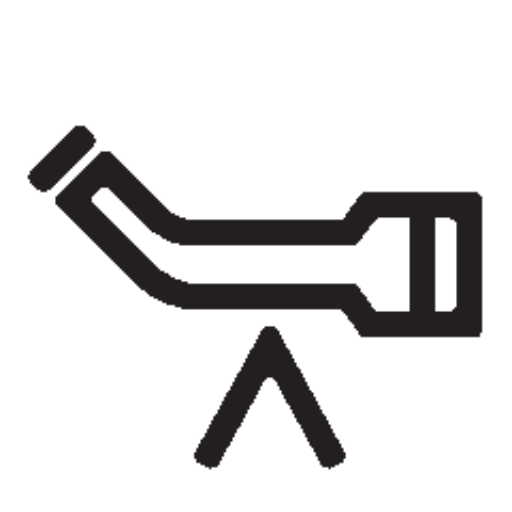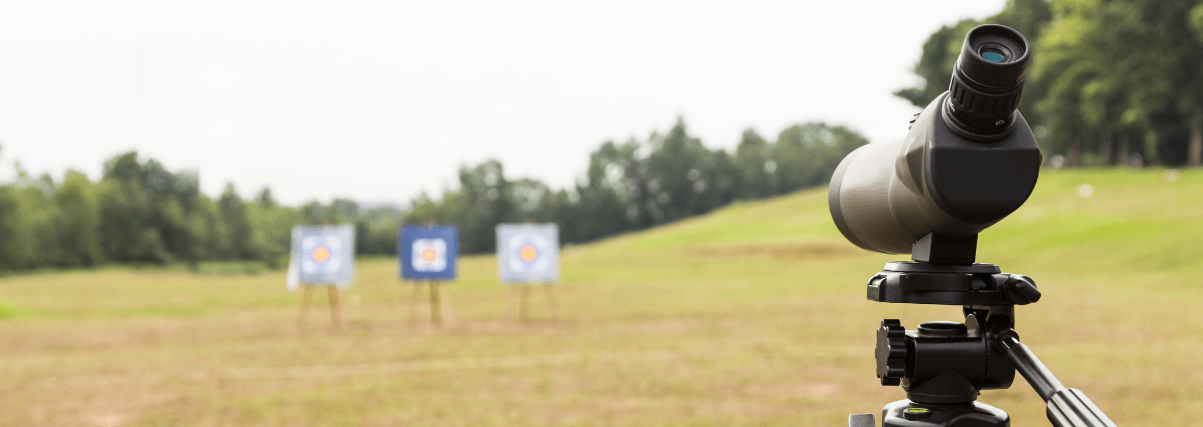Why use a spotting scope for shooting? With the spotting scope you can check shot hits on the targets at long distances. Since there are different distances to cover in shooting sports, the requirements for the spotting scope also vary.
Intensity of use
For sport shooters who only occasionally visit a shooting range, a spotting scope may be superfluous. However, inexpensive spotting scopes are available on the market, so that the costs remain manageable.
Sport shooters can also save money if the shooting distance does not exceed 50 meters. The rule of thumb: The greater the distance at which hits are to be checked, the higher the demands on the spotting scope. This means in return: the higher the price. The good news: High-performance spotting scopes for sport shooters are significantly cheaper than devices for ambitious nature observers or hunters.
In the further course, different spotting scopes are presented. Both devices for occasional use will be discussed, as well as those that are suitable for ambitious shooters at long distances. In addition, we want to go into what shooters should consider when buying a spotting scope. First, however, we will look at the differences in spotting scopes used in shooting sports.
These are the requirements sport shooters have for spotting scopes
For sport shooters, there are essentially two different categories of spotting scopes. The first category consists of spotting scopes for (short to) medium distances up to 50 meters. In the second category are spotting scopes for distances of 50 meters and more (long distances).
Compact spotting scopes, which are used for target observation and short distances up to 50 m, are usually much cheaper. However, sport shooters who shoot at distances of approximately 300 meters will not be happy with these devices. The accuracy of the shot cannot be determined at such long distances with compactly built devices. The lens quality and the incident light are not sufficient. It follows that a spotting scope for long distances tends to be more expensive, even in shooting sports.
For average requirements in the shooting sport exist a variety of suitable spotting scopes. Their prices range between about 150.00 £ and 300.00 £.
An overview of different price categories and spotting scopes can be found on the spotting scope test -Testpage.

What sports shooters should look out for when buying a spotting scope
For very short distances of about 25 meters, very inexpensive spotting scopes are also suitable. There is no need to spend money on high-quality and price-intensive devices.
Depending on the shooting range it happens that more compact designs are more practical than those in large designs. Very long or very bulbous spotting scopes cause problems with storage at some shooting ranges. There is simply not enough space.
Spotting scopes in the lowest price category allow the shooter to address the target at short distances. At long distances, the cheapest spotting scopes are usually no support.
Ambitious and professional sport shooters often find themselves in the situation of having bought inexpensive spotting scopes in the past and now no longer being satisfied with them. A test of spotting scopes on different sports ranges was conducted before. Tripods were also used in the test. The whole article on the test can be read on the website of artax-vorlader.de.
One question every sportsman should ask himself before buying a spotting scope is: How often will I use the spotting scope? If regular and intensive use is intended, go for a high-quality device. If you as a sports shooter only want to use a spotting scope occasionally, opt for a less cost-intensive version. Suppliers of spotting scopes for sport shooters are for example the company Zeiss, Swarovski, Leica or Meopta. More information about the use of spotting scopes for sport shooters is documented in this video:
These spotting scopes are suitable for sport shooters
If you are looking for a spotting scope for shooting sports and mostly shoot at distances up to 50 m, two variants from Omegon are available. Both spotting scopes are in a price range of 160,00 GBP (without guarantee). While the Omegon spotting scope of the type “Handyscope” does not need a tripod and can simply be used from the free hand, there is also an Omegon spotting scope in the tripod variant. In addition, two versions from Bresser are also interesting. The “Pirsch-20-60-80” is no longer in the low-price range. It can also be rated as a “premium model” for the sport shooter at 50m due to its higher quality construction.
The cheapest model is the Bresser Spektar. It costs less than 100,00 GBP and delivers satisfying results. All the spotting scopes mentioned can be found in the following overview:
The Bresser-Pirsch is also a fit for long distances. In addition, numerous other devices come into consideration. The prices of the following spotting scopes do not exceed 500.00 £ and come into question if you often devote yourself to shooting sports or want to cover distances of 100 m or more. The front lens diameter is at least 50 mm.
Spotting scope for sport shooters – additional requirements
Spotting scopes are often used to hit targets at different distances. However, many shooters are unsure of what is required in terms of magnification, lens size and, most importantly, optical quality when shooting at a given distance. How good is a spotting scope for sport shooters at 25 yards compared to distances of 400 yards scoring?
Before we get to individual spotting scope distances, it should be clear what conditions need to be considered. Air turbulence, heat flicker, dust, humidity, haze, and other atmospheric conditions affect image quality when using a spotting scope. Moreover, these conditions can change hourly. Even a high-quality spotting scope for target acquisition can be useless in harsh conditions of heat waves and mirages. It gets worse in when magnification is increased and if the distance to the target increases.
Before passing judgment on a spotting scope, tests should be conducted under a variety of conditions. Many scopes are blamed for poor performance when, in fact, the atmosphere is the culprit. So, let’s assume that favorable conditions prevail: Now we can turn to the characteristics and quality of spotting scopes.
Basic features of spotting scopes for sport shooters
In terms of features, most shooters want an eyepiece with plenty of eye relief. This is because you don’t normally bring your eye close to the eyepiece when shooting. 15 mm distance is the minimum here and most shooters are happier with a little more. For this very reason, many shooters use spotting scopes with angled viewing and rotating tripod collars. They allow rotation for scope body and the eyepiece to different positions.
Spotting scope for sport shooters from 25 m – 100 m
Up to 25 meters you don’t need a spotting scope with a big lens, lots of magnification or premium optics. An 18-36x is enough to see bullet holes at 25 yards. A good 50 mm lens is often enough for spotting multiple hits on the target. However, a 60mm lens will give you a more accurate picture and is still portable and affordable. If you value targets for air rifle or rimfire competition, look for the “close focus” or “minimum focus” under the specifications of a spotting scope. Not all scopes can focus on distances of 10 yards.
Spotting scope for sport shooters from 100 meters
Sport shooters looking for a spotting scope for distances over 100 meters must be more selective. This is where optical quality starts to become a problem. Because as the distance increases, so does the magnification requirement needed to see the target. What many shooters don’t realize, however, is that as the magnification in a spotting scope increases, so do the optical demands on the device, and they increase relatively quickly. Most scopes provide a good image at 20x magnification, but as they zoom in, the image quality drops. Exceptions to this are the very finest (and most expensive) spotting scopes.
If you want an image to be as sharp at 60x magnification as it is at 20x magnification, you will have to pay a corresponding price. Otherwise, expect a drop in image quality as the magnification increases. You will also find that this drop occurs more quickly on cheap scopes or spotting scopes than on high quality ones.
The bottom line is this: Just because a cheap scope offers the same magnification as an expensive scope, nothing is gained. A blurry image at 30x magnification becomes even worse at 60x magnification.
For sport shooters applies: A spotting scope is only as good as its weakest link
Optical quality is not comparable by numbers alone. Two spotting scopes can have identical specifications but be completely different in the distances they need to cover. The quality of the components matters:
- How accurately the lenses have been ground
- The type and quality of glass used
- The lens coatings and alignment of the optical system,
and more. A high-quality prism system can reduce stray light and sharpen the image. It also can increase the value of the most overlooked part of the spotting scope system. High quality eyepieces cost a small fortune and for good reason.
The good news is: Many spotting scopes with 60mm objective to 80mm objective are priced at about 200 – 300 GBP (upwards) and have sufficient optical quality to view 200-meter targets. Provided that reasonable observation conditions are given. For most shooters, the 200-metre distance is the maximum distance at which their own performance can be controlled during shooting. An overview of the numerous available spotting scopes on the market, can be found on the spotting scope test page.

